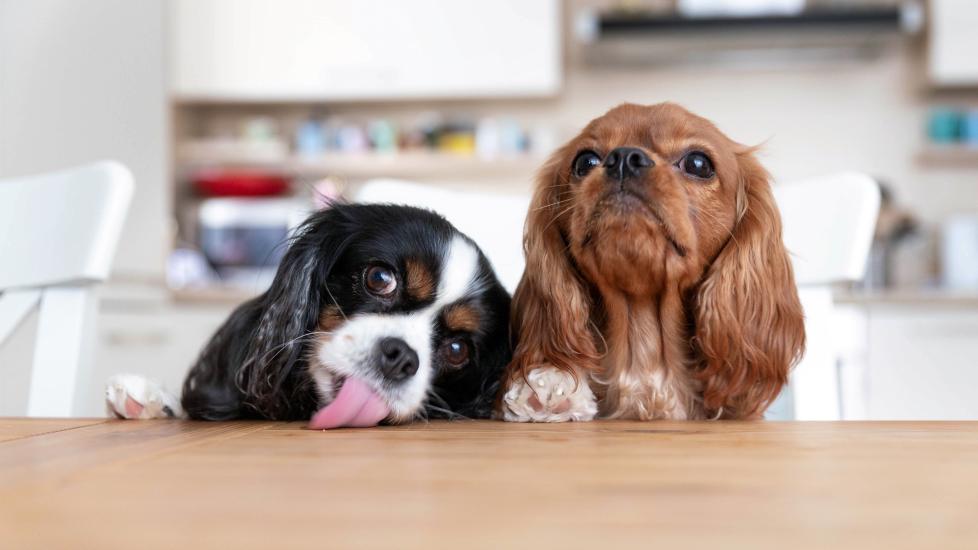Can Dogs Eat Olives?
NOTE: Always check with your veterinarian first before giving your dog any new foods, especially “people foods.” What might be OK for one dog might not be good for your dog, depending on multiple factors, such as their age, health history, health conditions, and diet. Dogs on prescription diets should not be fed any food or treats outside the diet.
Love ’em or hate ’em, olives are a popular food found in all sorts of savory dishes. And while olives may not be the first snack your pooch appears interested in, any dog parent with a hungry hound has found themselves wondering if their pooch can share a bite or two off their plate—even the less obvious foods, like olives! But can dogs eat olives safely, or will they make your pup sick?
Olives aren’t a great match for dogs, but they’re not toxic for them either. Whether or not your dog should eat olives depends on a number of factors. Let’s take a closer look.
Are Olives Bad for Dogs?
Olives are not toxic to dogs, but that doesn’t mean that they are completely safe for dogs to eat. Despite their small size, olives are packed with salt and fat—and not much else in the way of vitamins and minerals. Because they’re pretty tiny, one or two plain olives that have had their pits removed shouldn’t cause your pet any harm. But too many can lead to digestive issues such as gas, diarrhea, and/or vomiting.
How olives are prepared also makes a difference. Marinated olives, stuffed olives, or olives soaked in alcohol from your martini should never be shared with your dog. The olive itself might not be a problem, but the added ingredients could cause your dog serious harm. Blue cheese, garlic, onions, and alcohol are all toxic for dogs.
Marinated olives, stuffed olives, or olives soaked in alcohol from your martini should never be shared with your dog.
Black Olives
Black olives are the most common type of olive found in grocery stores, and they’re not toxic to dogs. If your dog eats one or two black olives, they should be fine. But these are very high in sodium, which can be harmful to your pup.
Green Olives
Like black olives, green olives are not toxic to dogs. But there are still a few safety considerations to keep in mind before sharing them with your dog. Green olives are also very high in sodium, so they should be shared only in tiny amounts.
Olive Oil
It’s not unusual to find olive oil in the ingredients list of commercial dog food and treats. It’s not toxic to dogs and can even be a healthy addition to your dog’s diet in very small amounts.
Olive oil is considered a source of “healthy fats” and can be used as a natural oil to help with dogs’ skin and coat (though it’s not as effective as fish oil). But even “healthy fats” should be limited. Eating olive oil just one time can cause pancreatitis, a potentially serious condition characterized by inflammation of the pancreas, so always talk to your vet before giving any amount to your dog.
Stuffed Olives
Many stuffed olives contain ingredients that are very harmful to dogs, such as garlic or blue cheese.
Garlic is toxic to dogs, while cheese can cause digestive issues because some dogs are lactose intolerant. The kind of cheese inside the olive also makes a difference: If your dog eats a stuffed olive that contains blue cheese, contact your vet right away. Blue cheese may contain a chemical that is toxic to dogs, so an urgent visit to the clinic may be needed. Other cheeses, such as feta or cheddar, don’t have the same risk as a blue cheese olive.
My Dog Ate an Olive. What Do I Do?
Unless your dog eats an olive that contains a pit or is stuffed with a dangerous ingredient like garlic or blue cheese, they’ll likely be fine if they eat an olive or two on occasion. But you should still monitor your dog for any signs of illness after they’ve eaten an olive—especially if your pooch has any health issues that could be made worse from the extra salt and fat.
Call your vet if your dog has eaten an olive and appears sick. Symptoms to watch out for include vomiting, diarrhea, other digestive issues, and lethargy. Your dog may need medical attention, and your vet will be able to advise on whether a visit to their office is needed based on your dog’s age, weight, and medical history.
What To Feed Your Dog Instead of Olives
Need a fun snack to share with your pooch? There are plenty of other “human foods” that dogs can safely enjoy instead of olives! The following are safe for dogs to eat:
As with any new food—even the safe, healthy kinds like these—you should introduce new ingredients to your dog’s diet in moderation and watch for any signs of digestive upset. Even though these foods and many others are safe for dogs to eat, the majority of their diet should come from a well-balanced dog food.
If you’re not sure about whether your dog should eat something, your vet is an excellent resource. Reach out to them with any questions about your dog’s health and the kinds of foods they can (and should or should not) eat based on their particular dietary needs.
Featured Image: Adobe/AnnaFotyma
